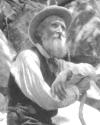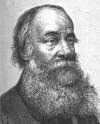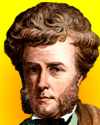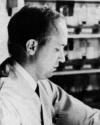 | TODAY IN SCIENCE HISTORY
NEWSLETTER - 24 DECEMBER |
 On 24 Dec 1923, Time magazine reported that bills introduced in Congress would conserve American helium resources as a monopoly for both war and peace purposes. The resulting arrangements for a strategic reserve remain to the present day (although they were about to expire and turned over to commercial interests). Helium has unique properties, and the earth's resources are finite. The available helium exists as a byproduct of billions of years of radiactive decay in deep rock formations. When used up, there is no more. In certain important industrial applications (no, not birthday balloons) there is no substitute. It is too light to remain in the atmosphere, and escapes to space. To understand where helium comes from, read the article “Helium Found in Kansas in 1903” from Oil and Gas News(1919). On 24 Dec 1923, Time magazine reported that bills introduced in Congress would conserve American helium resources as a monopoly for both war and peace purposes. The resulting arrangements for a strategic reserve remain to the present day (although they were about to expire and turned over to commercial interests). Helium has unique properties, and the earth's resources are finite. The available helium exists as a byproduct of billions of years of radiactive decay in deep rock formations. When used up, there is no more. In certain important industrial applications (no, not birthday balloons) there is no substitute. It is too light to remain in the atmosphere, and escapes to space. To understand where helium comes from, read the article “Helium Found in Kansas in 1903” from Oil and Gas News(1919). Another notable story for today is about “Muir of the Mountains” from the Sierra Club Bulletin (Jan 1916). When John Muir died on 24 Dec 1914, America lost one of the bulwarks of its early conservation movement. A commorative issue included the reminiscences of a number of people who had known him. The link here is to the piece written by Alexander McAdie, who was vice-president of the Sierra Club during some of the years that Muir was its president. |
 On 24 Dec 1914, John Muir died, leaving behind a legacy to the United States people that earned him the well-deserved name of “Father of the National park System.” Today's Science Store pick is: John Muir: The Eight Wilderness Discovery Books, by John Muir who provides the student of nature over a thousand pages of descriptive writing that leads through the high Sierra, the redwood forests, and his 1,000 mile trek through Florida to the Gulf of Mexico. Muir's writings about nature and his adventures are captivating and beautiful. As reader, you feel you are there, and you find yourself wanting to get out and experience the same feeling firsthand in real life. This is the kind of book, that once you begin to read it, you wonder how did you go so long without knowing what you had been missing. It is available New from $28.20. Used from $15.94. (As of time of writing.). On 24 Dec 1914, John Muir died, leaving behind a legacy to the United States people that earned him the well-deserved name of “Father of the National park System.” Today's Science Store pick is: John Muir: The Eight Wilderness Discovery Books, by John Muir who provides the student of nature over a thousand pages of descriptive writing that leads through the high Sierra, the redwood forests, and his 1,000 mile trek through Florida to the Gulf of Mexico. Muir's writings about nature and his adventures are captivating and beautiful. As reader, you feel you are there, and you find yourself wanting to get out and experience the same feeling firsthand in real life. This is the kind of book, that once you begin to read it, you wonder how did you go so long without knowing what you had been missing. It is available New from $28.20. Used from $15.94. (As of time of writing.). | | For picks from earlier newsletters, see the Today in Science History Science Store home page. | |
 | Between every two pine trees there is a door leading to a new way of life. - John Muir, Scottish-American naturalist, farmer, explorer, writer and conservationist (died 24 Dec 1914).  |
 | The most convincing proof of the conversion of heat into living force [vis viva] has been derived from my experiments with the electro-magnetic engine, a machine composed of magnets and bars of iron set in motion by an electrical battery. I have proved by actual experiment that, in exact proportion to the force with which this machine works, heat is abstracted from the electrical battery. You see, therefore, that living force may be converted into heat, and that heat may be converted into living force, or its equivalent attraction through space. - James Prescott Joule, English physicist (born 24 Dec 1818).  |
 | That special substance according to whose mass and degree of development all the creatures of this world take rank in the scale of creation, is not bone, but brain. - Hugh Miller, Scottish geologist and theologian (died 24 Dec 1856).  |
| Before you look at today's web page, see if you can answer some of these questions about the events that happened on this day. Some of the names are very familiar. Others will likely stump you. Tickle your curiosity with these questions, then check your answers on today's web page. |
 | James Prescott Joule, English physicist, born 24 Dec 1818, established that the various forms of energy - mechanical, electrical, and heat - are basically the same and can be changed, one into another. Thus he formed the basis of the law of conservation of energy.
 The law of conservation of energy is incorporated in the statement of which law of thermodynamics? |
 | John Muir (1838-1914) was a Scottish-American naturalist, farmer, explorer, writer and conservationist, who championed the establishment of national parks. Muir drew attention to the devastation of mountain meadows and forests by sheep and cattle, leading to his role as “Father of the National Park System.”
 Which two national parks in California did Muir champion? |
 | On 24 Dec of a certain year, the first U.S. house to be completely solar heated was occupied in Dover, Mass. The heating system, designed by Dr. Maria Telkes from the MIT Solar Laboratory, used black sheet metal collectors to capture solar energy, stored by the phase-change of sodium sulphate decahydrate in “heat bins.”
 In which decade was this solar house established? |
 | On 24 Dec 1936, the first radioactive isotope medicine was administered, Berkeley, Cal. John Lawrence treated a 28-yr-old woman with chronic leukemia. He administered a radioactive isotope, artificially produced in a 37-in cyclotron. It was the first time that a radioactive isotope had been used in the treatment of a human disease.
 An isotope of which element was used? |
When you have your answers ready to all the questions above, you'll find all the information to check them, and more, on the December 24 web page of Today in Science History. Or, try this link first for just the brief answers.
Fast answers for the previous newsletter for December 23: Too large to be operated by hand, it was developed to run under the power of the water-wheel • hair and beauty products for black women • helium • decade containing the year 1986 • Frank Borman, James A. Lovell, Jr. or William Anders • Dr. Robert Oppenheimer. |
 If you enjoy this newsletter, the website, or wish to offer encouragement or ideas, please send feedback by using your mail reader Reply button. If you enjoy this newsletter, the website, or wish to offer encouragement or ideas, please send feedback by using your mail reader Reply button.
Your click on a StumbleUpon, Google+ or Facebook social button on the site webpages is also a welcome sign of appreciation. Thank you for using them. |
To find citations for quotations go to the corresponding webpage by clicking on the “quotes” balloon icon. Sources for the thumbnails appear on today's webpage with the corresponding item.
� This newsletter is copyright 2013 by todayinsci.com. Please respect the Webmaster's wishes and do not put copies online of the Newsletter � or any Today in Science History webpage. (If you already have done so, please remove them. Thank you.) Offline use in education is encouraged such as a printout on a bulletin board, or projected for classroom viewing. Online, descriptive links to our pages are welcomed, as these will provide a reader with the most recent revisions, additions and/or corrections of a webpage. For any other copyright questions, please contact the Webmaster by using your mail reader Reply button. |
--
If you do not want to receive any more newsletters,
Unsubscribe To update your preferences and to unsubscribe visit
this link 


 On 24 Dec 1923, Time magazine reported that bills introduced in Congress would conserve American helium resources as a monopoly for both war and peace purposes. The resulting arrangements for a strategic reserve remain to the present day (although they were about to expire and turned over to commercial interests). Helium has unique properties, and the earth's resources are finite. The available helium exists as a byproduct of billions of years of radiactive decay in deep rock formations. When used up, there is no more. In certain important industrial applications (no, not birthday balloons) there is no substitute. It is too light to remain in the atmosphere, and escapes to space. To understand where helium comes from, read the article “Helium Found in Kansas in 1903” from Oil and Gas News(1919).
On 24 Dec 1923, Time magazine reported that bills introduced in Congress would conserve American helium resources as a monopoly for both war and peace purposes. The resulting arrangements for a strategic reserve remain to the present day (although they were about to expire and turned over to commercial interests). Helium has unique properties, and the earth's resources are finite. The available helium exists as a byproduct of billions of years of radiactive decay in deep rock formations. When used up, there is no more. In certain important industrial applications (no, not birthday balloons) there is no substitute. It is too light to remain in the atmosphere, and escapes to space. To understand where helium comes from, read the article “Helium Found in Kansas in 1903” from Oil and Gas News(1919). 



 The law of conservation of energy is incorporated in the statement of which law of thermodynamics?
The law of conservation of energy is incorporated in the statement of which law of thermodynamics? 
 Which two national parks in California did Muir champion?
Which two national parks in California did Muir champion? 
 In which decade was this solar house established?
In which decade was this solar house established? 
 An isotope of which element was used?
An isotope of which element was used?  If you enjoy this newsletter, the website, or wish to offer encouragement or ideas, please send feedback by using your mail reader Reply button.
If you enjoy this newsletter, the website, or wish to offer encouragement or ideas, please send feedback by using your mail reader Reply button. 

Δεν υπάρχουν σχόλια:
Δημοσίευση σχολίου